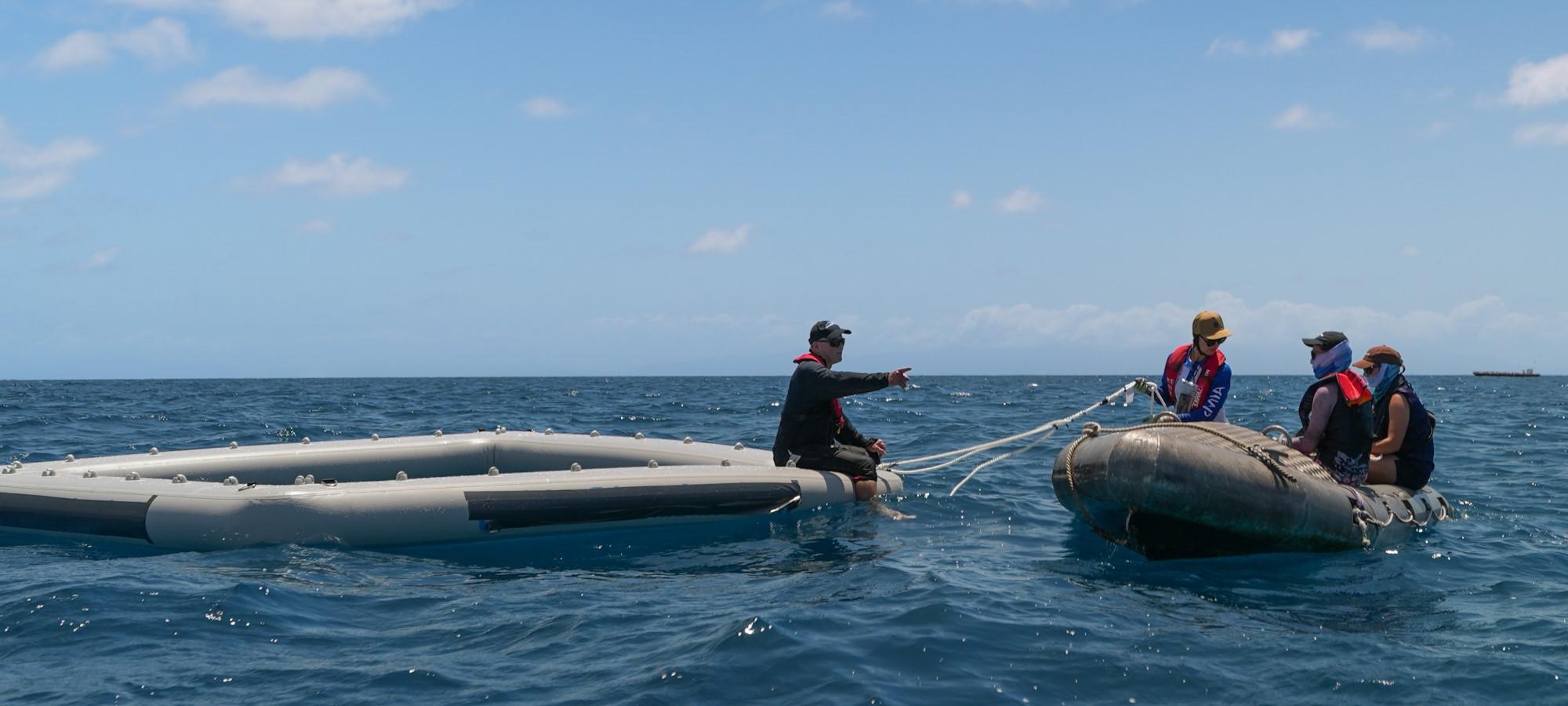One of the biggest challenges to effective reef restoration is applying interventions at scale, particularly in areas as vast as the Great Barrier Reef. To meet this challenge, the Pilot Deployments Program (PDP) is translating reef interventions from research and development to large-scale reality.
Over the last few years, AIMS and our collaborators have been developing a toolbox of interventions to help coral reefs recover from the effects of climate change, and resist warming temperatures caused by climate change.
The scientific and technological advances made by teams from the Reef Restoration and Adaptation Program (RRAP) have resulted in innovative approaches to large scale reef restoration. The PDP’s primary goal is to make these interventions fully operational, moving them from a ‘proof of concept’ stage to a point where they are ready for large-scale application by developing third-party supply chains and building local capacity on the Great Barrier Reef.
A key step in moving the current science to this restoration reality involves using the power of local people. Building on the lessons from projects like Boats4Corals, the PDP will actively engage the local community, their skills, vessels, and knowledge to create partnerships with a diverse range of organisations and the community.
Stepping up scale - Pilot Deployments Program in North Queensland in 2025
The PDP will be focusing on two locations on the Great Barrier Reef during the 2025 spawning season: one in the southern region, the other in the northern region.
First, around November’s mass coral spawning, all eyes will be on the Keppel Islands. Indigenous Rangers from eight Traditional Owner groups will gather on Woppaburra sea Country to train in advanced reef restoration techniques, as part of the Indigenous Futures Project. At the same time, corals will be collected from the Keppels, spawned in aquaculture and their larvae reared at the National Sea Simulator (SeaSim), and returned to their home sites.
Then, during December and January, 14 community and industry groups will join PDP science and engineering teams in Cairns and Port Douglas to apply reef restoration techniques at deployment scale on nearby reefs.
Two innovative intervention methods, developed through the Reef Restoration and Adaptation Program, will be the focus of the PDP 2025 operations:
- Slick Collection and Release: This method uses the natural sexual reproduction of corals, where genetically diverse coral spawn slicks are collected and resulting coral larvae delivered to target reefs to accelerate recovery.
- Conservation Aquaculture: This involves spawning wild-collected coral colonies in aquaculture facilities to produce juvenile corals for delivery to target reefs.
This is the second time these industries in the Far North Queensland region have participated with these more developed restoration approaches, held at Agincourt Reef near Port Douglas, Arlington and Elford Reefs near Cairns. In 2024, the team undertook capacity building activities solely in the Slick Collection and Release method. In 2025, the crews will continue to develop their skills in Slick Collection and Release techniques using two different methods:
- Larval release involves rearing the coral larvae in the pools until they are ready to ‘settle’ on the reef surface. At this time, the larvae will be released directly from the pools onto a reef.
- Settlement devices will allow the coral larvae to settle onto special devices within the pools and become young coral polyps. These devices are then transported and delivered onto a reef, providing structure for the larvae to grow on.
PDP will also be engaging in Conservation Aquaculture in January for the first time, piloting large scale deployments of seeded devices using industry vessels and crews. As well as valuable training and knowledge sharing with the industry participants, the exercises in 2025 will help the science and engineering teams assess practicality, safety, efficiencies and costs. These findings will improve current and future interventions, improving on building coral numbers for the future.
Why is this needed?
Climate change is the greatest threat to reefs worldwide. Reducing emissions is critical to ensuring the future of coral reefs around the world. The reef's natural recovery processes are now severely challenged. Following major disturbances, reef-building coral populations can be decimated, leaving the reef "larval limited". Therefore, in tandem with global action on emissions, good local management and scalable interventions to restore reefs are required.
Collaboration team
Dr Mark Gibbs – Program Director, Pilot Deployments Program (AIMS)
Pilot Deployments Program team
RRAP research providers including SCU, QUT and CSIRO
Community and industry participants
This project is supported by:
Australian Government’s Reef Trust
Australian Institute of Marine Science
The Reef Restoration and Adaptation Program, funded by a partnership between the Australian Government’s Reef Trust and the Great Barrier Reef Foundation.
The Great Barrier Reef Foundation and its partnership with Qantas


